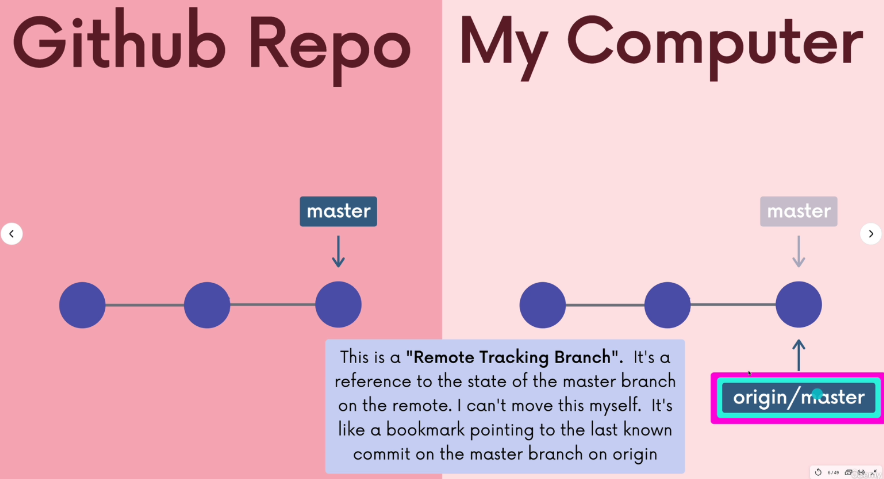- Related: Connecting local git repo to server
Adding a new repo
Make a git repo first.
# Initializes new github repo.
# Creates a dir called .git that contains all git history
# Top down: any child dirs will get tracked
# DO NOT GIT INIT INSIDE A REPO (check w/ git status)
git init
#Staging files
git add .
git add file1 file2
#Make a commit with all changes in the staged file
#Can group **similar changes together**
git commit -m "Initial commit"
git commit #opens up vim/text editor to put commit msg
# -a: adds every modified/deleted files (w/o `git add` command)
# -m: commit msg
git commit -a -m "New changes" #only works with files already tracked by git
git commit -am "New changes"
IMPORTANT git commands
# MOST IMPORTANT GIT COMMAND!!
# Tells you which branch you're on and its relationship to the remote repo (ahead x commits, behind y commits, etc)
git status
# lists the commit history of your current branch for a given repo
git log
git log --oneline # shortens git log output”Amending” just the previous commit
# If you forgot to add a file and commited, then add the file first and do the command
git add forgotten_file.py
git commit --amend
#this allows to change commit msg- Use this if you have to:
- Add forgotten files
- Change the commit message
Branches
# lists all branches in your local directory
git branch
git branch -v #more info
# creates branch **based upon the current HEAD**
# does not switch
git branch test_branch
# switches branch
git switch test_branch
git checkout test_branch #checkout can do a million other things
# Create and switch to a new branch
git switch -c test_branch
git checkout -b test_branch
# Delete branch
# you have to be OUT of that branch & have it alr merged into another branch
git branch -d text_branch
# deleting by force if you haven't merged it
git branch -D text_branch
# Rename branch (we change it ON the branch)
git branch -m text2_branch
git branch -move text2_branch
git branch -M text_2branch # forcefully renames, overwritting the old one if any
# Merging branch
git switch master #change to receiver branch
git merge bugfix #merge into master- Merging
- Merging branches reference
git stash
"""The most common commands"""
# stashes all uncommited changes(staged and unstaged)
git stash
git stash save # same as above
# Removes the most recently stashed changes in your stash and re-apply them to your working copy
git stash pop
""" ====== Rare commands ====== """
# Applies whatever is stashed away, without removing it from the stash. # This can be useful if you want to apply stashed changes to multiple branches
git stash apply
"""multiple stashes (which is kinda unusual..lol)"""
git stash list
git stash apply stash@{1}
git stash pop #pops the last stash
git stash drop stash@{1} # deletes the stash (if you aren't using pop)
git stash clear # empties stash list- Explained more here: Git stash
git diff
# lists all the changes in working directory NOT staged for the next commit
# working directory (X staged, where you're on) vs staging area (added, but uncommited)
git diff
# shows what you could have added (staged) but haven't added yet
# a - staging area, b - working directory
# git (last commited state) vs staging area (added, but uncommited)
git diff --staged
git diff --cached
# shows what you've staged and are about to commit
# lists all changes in working tree since last commit
git diff HEAD
# Diff-ing specific files
git diff HEAD [filename1] [filename2]
git diff --staged [filename]
# Comparing changes between tips of branch1 and branch2
# changes between ALL commited files that exist in those 2 branches!!
git diff branch1..branch2
git diff branch1 branch2
# Diff. bet. commits (use the commit hashes)
git diff commit1..commit2- A more comprehensive explanation: Git diff
Removing all existing git history
rm -rf .gitWorking with remote git repo
Cloning a repo
git clone <url> #clones the entire repo
git clone -b branch1 <url> #clones a specific branch1git clone <url>- not tied to github but its a git command
- Works with any git repos
- A remote tracking branch:
<remote>/<default-branch>
- In my computer
masterbranch: When you clone a repo, whatever the repo has it’s default branch, that’s what we will start with (in this casemaster).- Remote tracking branch
origin/master: Points to themasterbranch in theoriginremote!masterbecause it’s the default branch
- In my computer
# we can see the remote branches our local repo knows about
git branch -r
# origin/HEAD -> origin/master # HEAD points to the default branch
# origin/master # Remote branch tracking the remote's master branch
# origin/feature # Other remote branches (e.g., a feature branch)
Push an existing repo from the CLI
git remote add origin https://github/com/lkim0402/(repo)
git branch -M main
git push -u origin main